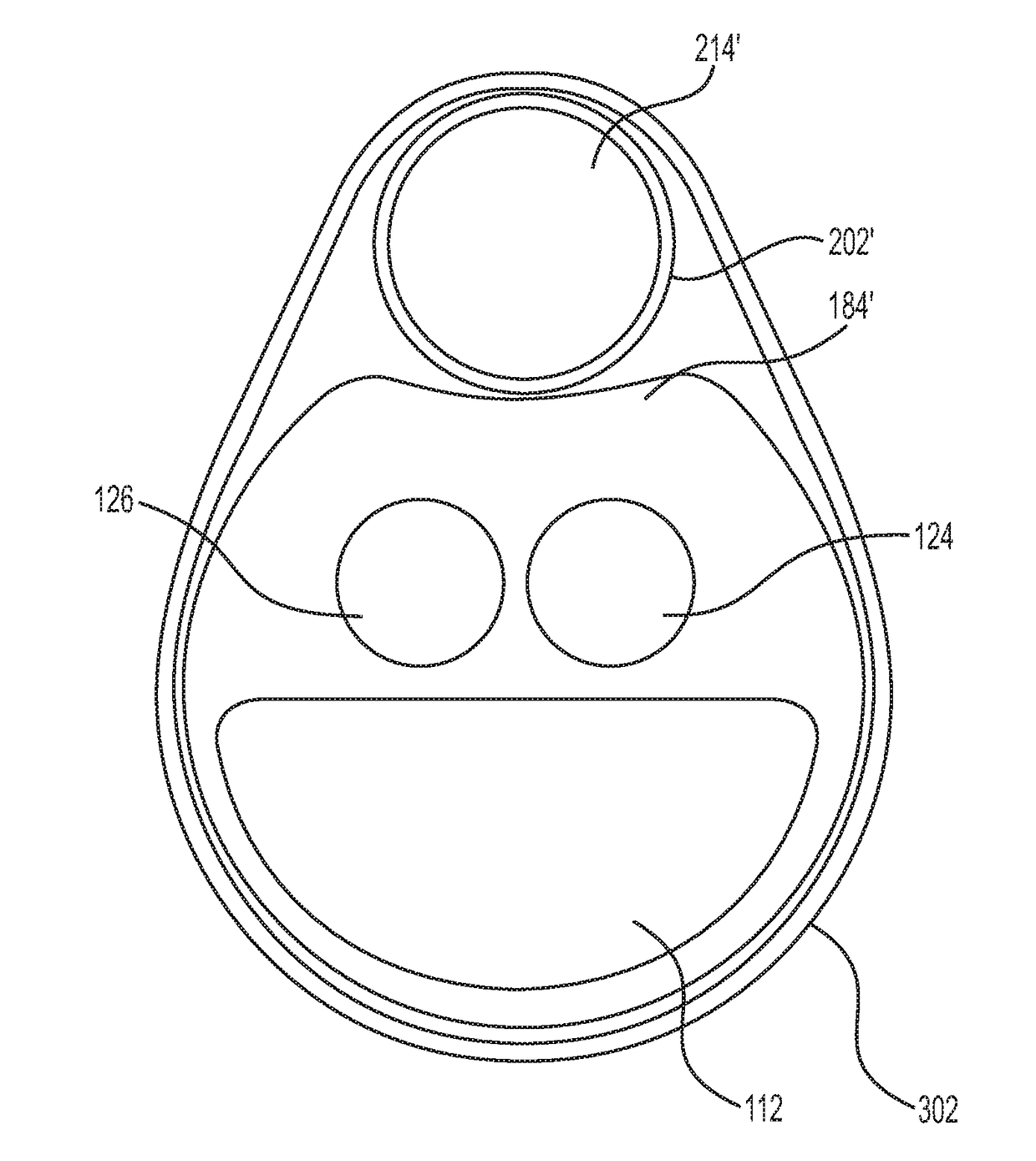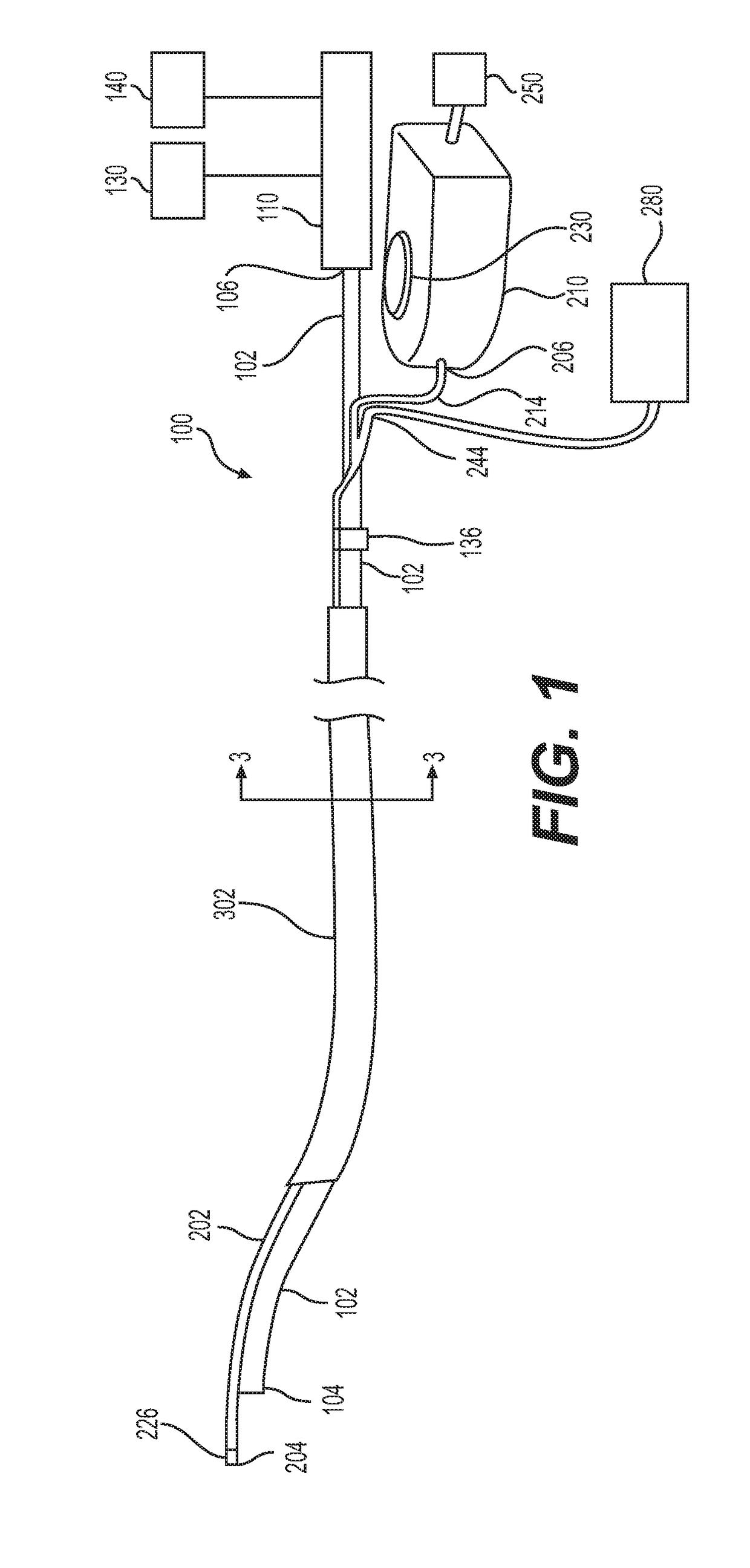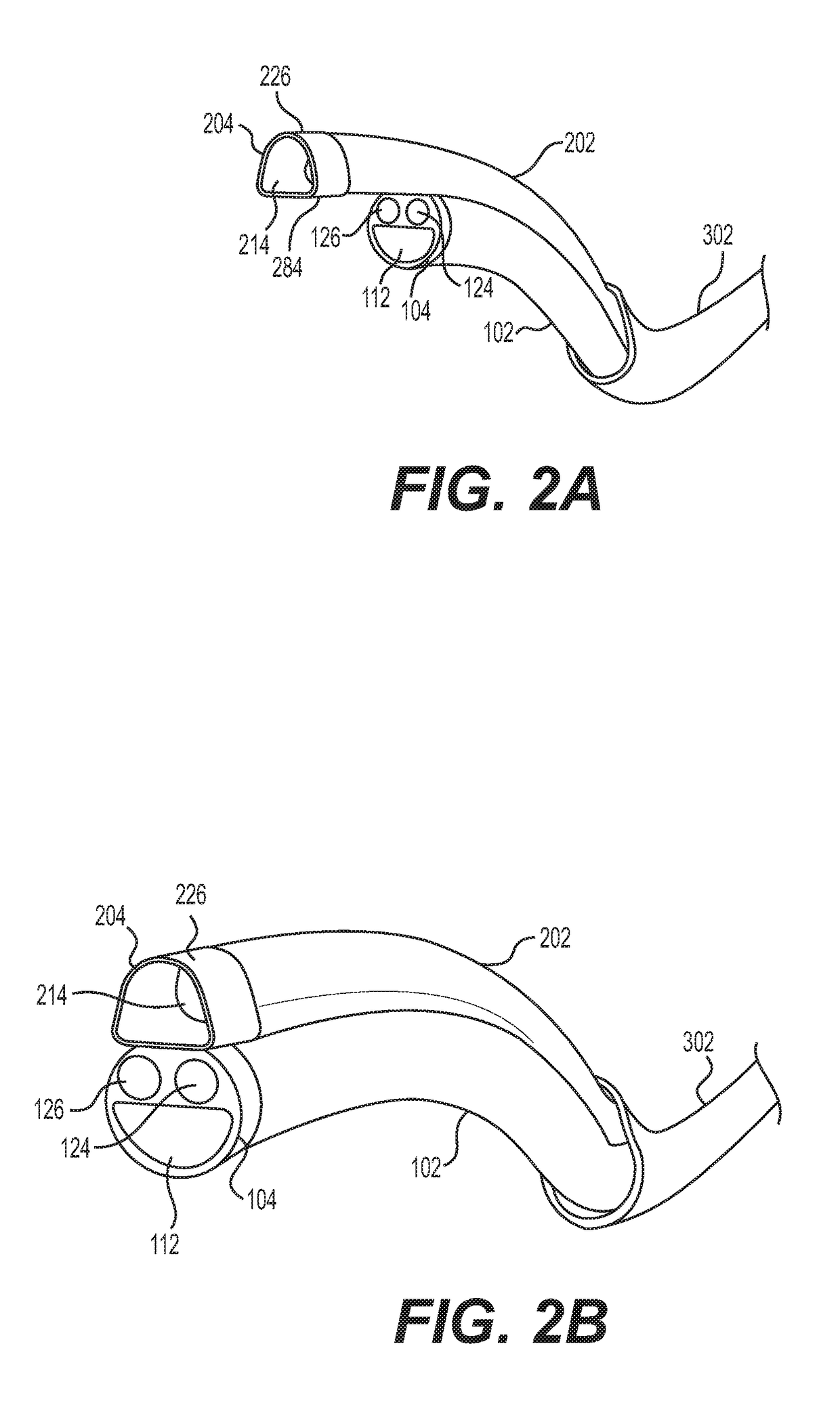Medical device and methods of use
a medical device and ureteroscope technology, applied in the field of medical devices, can solve the problems of loss of kidneys, inability to continue to break stones or stone fragments into smaller fragments without repositioning the ureteroscope, and small stone fragments not passing naturally
- Summary
- Abstract
- Description
- Claims
- Application Information
AI Technical Summary
Benefits of technology
Problems solved by technology
Method used
Image
Examples
Embodiment Construction
[0023]Reference is now made in detail to examples of the present disclosure, examples of which are illustrated in the accompanying drawings. Wherever possible, the same reference numbers will be used throughout the drawings to refer to the same or like parts. The term “distal” refers to a position farther away from a user end of the device. The term “proximal” refers a position closer to the user end of the device. As used herein, the terms “approximately” and “substantially” indicate a range of values within + / −5% of a stated value.
[0024]Overview
[0025]Aspects of the present disclosure relate to systems and methods for breaking kidney stones into smaller particles and removing those particles from a target area of a patient's body. The medical device described herein may work by securing an elongate member for suction to an outer surface of a tube of a delivery device. A distal end of the tube and a distal end of the elongate member may be positioned within a ureter of a patient. In...
PUM
 Login to View More
Login to View More Abstract
Description
Claims
Application Information
 Login to View More
Login to View More - R&D
- Intellectual Property
- Life Sciences
- Materials
- Tech Scout
- Unparalleled Data Quality
- Higher Quality Content
- 60% Fewer Hallucinations
Browse by: Latest US Patents, China's latest patents, Technical Efficacy Thesaurus, Application Domain, Technology Topic, Popular Technical Reports.
© 2025 PatSnap. All rights reserved.Legal|Privacy policy|Modern Slavery Act Transparency Statement|Sitemap|About US| Contact US: help@patsnap.com



